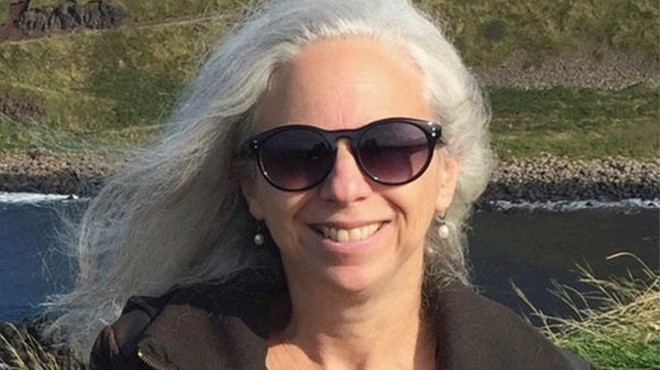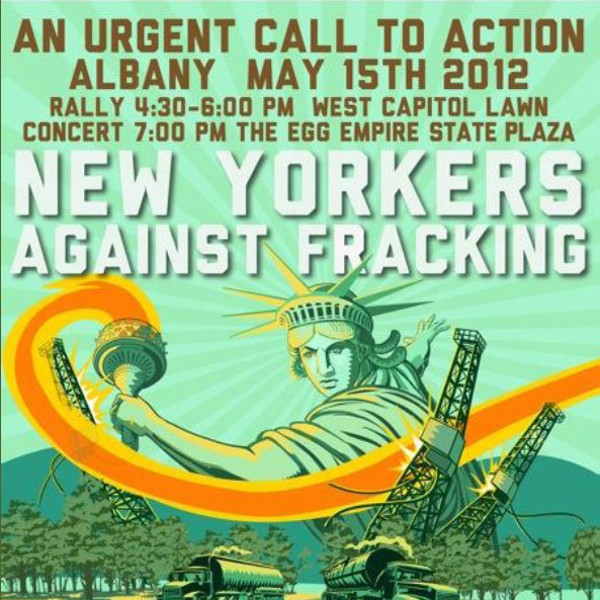Frack Watch: Coming Soon: Drilling in Towns That Want It
[]
It was the first sign of the lifting of the state’s four-year moratorium on hydraulic fracturing for natural gas. On June 13, the New York Times reported that the Cuomo administration planned to allow fracking for natural gas in a few counties along the Pennsylvania border. Leaked by an unnamed senior official in the New York State Department of Environmental Conservation (DEC), this “trial balloon” quickly lost air as both opponents and supporters dissed the plan, according to Shale Gas Review blogger Tom Wilber, author of a book about hydrofracking called Under the Surface.
The DEC provided no more details following the news article. DEC spokesperson Emily DeSantis wrote in an e-mail that the drilling moratorium will not be lifted until the agency has completed its final environmental review, which could happen by the end of the summer. The DEC is in the midst of preparing responses to the approximately 80,000 comments it received.
Under the plan, only drilling in communities supportive of hydro-fracking would be allowed. Fracking opponents says this would create “sacrifice zones” that unfairly put those communities at risk. “The governor’s office is essentially telling communities to make decisions when they don’t have the information,” says Ramsay Adams, executive director of Catskill Mountainkeeper. “He wants to appease as many environmentalists as possible while moving forward with natural gas development in the most limited, protective way.” Such a solution is premature, given the inadequacy of the DEC’s environmental review and proposed regulations, says Adams.
One major problem is that the DEC classifies the chemical-laden and possibly radioactive wastewater from fracked wells as nonhazardous, he notes. As it is, the DEC is allowing fracking wastewater to be disposed of at the municipal wastewater treatment facility in Niagara Falls, according to Adams. Furthermore, toxic wastewater from the state’s 14,000 vertically drilled wells (which contain the same chemicals) is being disposed of on roadways as a deicer and dust suppressor.
The plan would allow drilling only in shale formations more than 2,000 feet below the surface and would require a vertical distance of at least 1,000 feet between the fractured rock and a water source, such as an aquifer. But, according to Adams, that requirement would not protect groundwater. He cites a recent study by hydrologist Tom Myers that shows fractures in the Marcellus Shale formation serve as natural conduits for the chemically laden wastewater, causing it to eventually migrate into the groundwater.
Matt Ryan, who is mayor of Binghamton, which has a two-year ban on drilling, says that the natural gas companies admit to a seven percent failure rate in the cement well casings. That, coupled with the industry’s use of 596 harmful chemicals (many of them known carcinogens) in the drilling and fracking process casts serious doubt on the assertion that fracking can be done without impacting drinking water supplies, he says. “I don’t see how the governor can possibly go forward with a demonstration project,” Ryan says. “We’re supposed to know before the drilling whether it will work or not. It’s either safe in every area or it’s not safe. The reality is that in every place drilling has happened, the stories continue about the mounting failure rate.”
Katherine Nadeau, water and natural resources program director at Environmental Advocates of New York, says the state’s failure to conduct an assessment of the health impacts of hydrofracking, despite an urgent request from hundreds of medical and health professionals, is another cause for concern. Plus, before allowing drilling, the state needs to ensure “a fair process for enabling communities to determine that they have the resources needed to deal with this type of development,” says Nadeau.
Industry representatives welcomed the plan but said it didn’t go far enough. James Smith, spokesperson for the Independent Oil and Gas Association of New York, says the plan was “a positive first step. With the proper regulation we can enjoy the economic benefits of natural gas and protect the environment.” Tom West, an Albany-based lawyer who represents the oil and gas industry, says the plan was “a step in the right direction, but I don’t think it’s necessary to limit drilling.” West says the DEC is “going too far. There are too many restrictions. You can’t have so many prohibitions and setbacks that you can’t get at the resource.”
West adds that the rock-bottom price of natural gas means “there’s not much of a business argument for drilling in New York right now.” However, the attorney says he expects demand to increase as more power plants are converted from coal to natural gas and more liquefied natural gas fueling facilities are built for use in transportation. The companies need to drill test wells in New York to ascertain the amount and quality of the resource, West says. A permanent ban “would stimulate a lot of litigation.”
Dewey Decker, who is town supervisor in Sanford, a small town in Broome County, says that 80 percent of the local populace support drilling. He was on the verge of selling off his 1,100-acre dairy farm because he could no longer make a profit when the land men arrived. Thanks to the payment he received for leasing his farm, he was able to hold on to his land and keep farming. He is head of the Deposit Landowners Coalition, which signed two leases with XTO Energy, an ExxonMobil subsidiary, for $110 million. The coalition represents more than 300 property owners who are collectively leasing 50,000 acres.
“The government has been trying to create some kind of economy for years and years,” says Decker. “They take taxpayer money and give out grants to have businesses come in”—a strategy that hasn’t worked, given that large retailers like Wal-Mart get big tax breaks and cannibalize local businesses when they hire, Decker notes.
In contrast, “gas is not creating a cost but a benefit.” Decker says the coalition’s lease agreement with XTO Energy requires the gas company to pay for road maintenance, locate wells at least 500 feet from buildings, test residents’ wells prior to drilling, and store fracking wastewater in enclosed tanks, which would be recycled in the drilling of new wells.
“I’m confident the DEC is making a study strong enough to regulate the drilling and protect the water,” Decker says. “Gas is the cleanest and most abundant fuel that we have. I’m not against wind or solar, but we need to have them all.”
Fracking opponents contest the assumption that fracked gas is clean. High levels of greenhouse gases are emitted from the diesel equipment and trucks in the gas fields and compression stations, Ryan notes. Unfortunately, the DEC’s environmental review does not look at the alternatives for a clean energy future, he says. Rather than buying into gas drilling, which is “a short-term vision, just a way to get rich,” Cuomo “should make the state a leader in clean energy by producing windmills, putting in photovoltaics, and growing biofuels.”
Once drilling comes to New York, there’s no turning back, says Adams. “This industry is building a natural gas infrastructure that will force us to be addicted to a fossil fuel for the next 50 years. What we’re doing is handing over an opportunity to save ourselves from falling off the climate cliff.”
Can drilling be done safely? Shale Gas Review blogger Wilber says the answer is yes, hypothetically. “For me it starts with transparency,” he says. That would mean rescinding of the so-called Halliburton loophole, which exempts fracking from the oversight of all federal environmental laws, by the president and the Environmental Protection Agency—a possibility under Obama but definitely not under Romney, Wilber says.
While the oversupply of natural gas has eased the political urgency to drill, Wilber says that will change given the growing demand for a cheap source of energy in India and China. The natural gas industry sees itself as a global leader in meeting this need, he adds. “We have a huge shale gas reserve and the industry here has a two-decade lead over other places,” he says. While exporting natural gas to overseas markets would obviously be a sensitive political issue, Wilber says the first facility for liquefying natural gas for export overseas has been approved on the Gulf Coast. “As more money comes on the table, there could be a lot more pushing and shoving,” says Wilber. “The gas industry can push hard.”
But so can activists. “The truth will overcome corporate greed here in New York,” says Adams. “So far, we’re just practicing. The war starts when they poke a hole in the ground. Our one hundred thousand [activists] will turn into a million.”
















